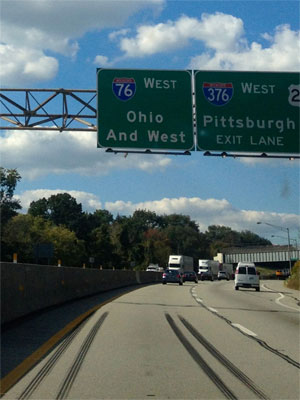An Event Apart 2014 Schedules, Round One
Published 12 years, 2 weeks pastI’ve recently had the odd experience of seeing from the outside something that I usually get to see from the inside: the schedules and workshops for the first three An Event Aparts of 2014 have been announced. Those shows are:
- An Event Apart Atlanta 2014 (17–19 February 2014)
- An Event Apart Seattle 2014 (30 March – 2 April 2014)
- An Event Apart Boston 2014 (28–30 April 2014)
All the shows feature a great mix of veterans and new faces, all coming together to bring our usual blend of looking to the future while staying firmly grounded in the details of the here-and-now. The shows include workshops from Luke Wroblewski (in Atlanta or Boston) or Josh Clark (in Seattle) about mobile and touch design.
Ordinarily, at this point I’d say “hope to see you there!” but I can’t be sure that I’ll be able to hold up my side of that. The same family crisis that forced me to withdraw from the last four AEAs of 2013 has also kept me off the roster for at least the first three shows of 2014, and I don’t know that I’ll be able to travel even to visit. I’ll continue to be a part of the show, but behind the scenes, at least for now.
And that crisis is why I got to experience the announcements from the outside. While I was in Philadelphia, I was basically on extended medical leave from AEA, with the team picking up every scrap of my duties they could. They pretty much soaked up 99%+ of what I do daily, sparing me the worry of day-to-day operations and leaving me free to focus everything I could on my daughter and family during a very difficult period. I am forever indebted. I can’t ever thank them enough for what they did for me. I am beyond fortunate to have had such a strong team of friends and colleagues at my back.
I will say that it was a good thing for me to experience the process from the audience, as it were, gaining a new perspective on what we do and how we do it. I certainly don’t recommend a major crisis as the best way to gain that perspective, but I have a newfound appreciation for the value of stepping outside of the process as completely as possible. You might be very surprised by how things look from out there.
But back to the point: the complete agendas are up for the first three AEAs of 2014, so go check them out! And if you’re at all interested, I wouldn’t wait to register any longer than absolutely necessary. Every show for the past two or three years has sold out weeks or months in advance, and cancellation rates are low enough that it’s pretty rare for people on the waiting list to get in. I hope you’ll be there!
